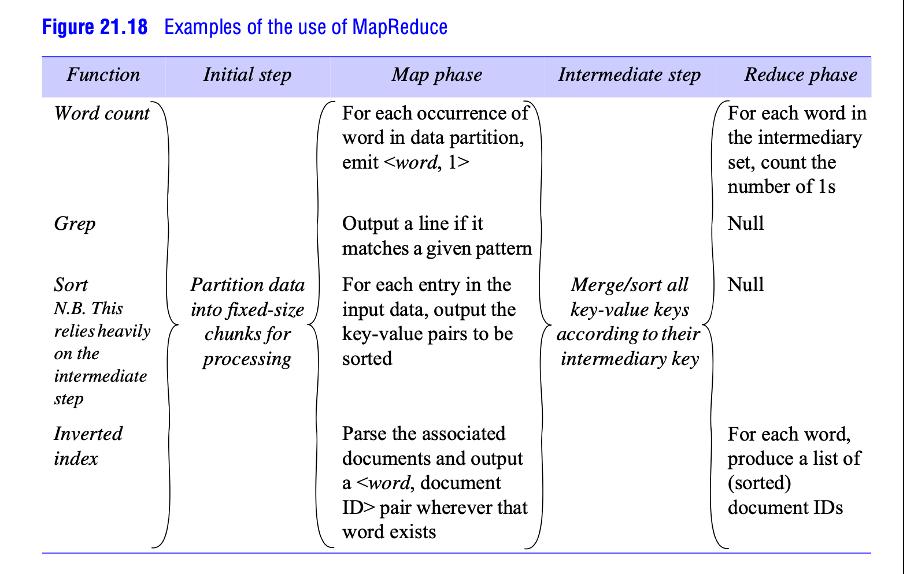Question
Three computers together provide a replicated service. The manufacturers claim that each computer has a mean time between failure of five days; a failure typically
Three computers together provide a replicated service. The manufacturers claim that each computer has a mean time between failure of five days; a failure typically takes four hours to fix. What is the availability of the replicated service?
Q2) In a multi-user game, the players move figures around a common scene. The state of the game is replicated at the players' workstations and at a server, which contains services controlling the game as a whole, such as collision detection. Updates are multicast to all replicas. Consider the following conditions:
i) The figures may throw projectiles at one another, and a hit debilitates the unfortunate recipient for a limited time. What type of update ordering is required here? Hint: consider the 'throw', 'collide' and 'revive' events.
ii) The game incorporates magic devices that may be picked up by a player to assist them. What type of ordering should be applied to the 'pick-up-device' operation?
Q3) Explain the difference between linearizability and sequential consistency, and why the latter is more practical to implement, in general.
Q4) Explain why making some replica managers read-only may improve the performance of a gossip system.
Q5) Discuss whether it is possible to improve upon the 'pull' model of service discovery by multicasting (or broadcasting) and caching replies to queries.
Q6) What is data-oriented programming and how does it differ from object-oriented programming?
Q7) In some location systems, tracked objects give up their identifiers to the infrastructure. Explain how this may give rise to concerns about privacy, even if the identifiers are anonymous.
Q8) Figure 21.18 lists a number of possible applications of MapReduce. Describe one other possible application and sketch out how this would be implemented in MapReduce, providing in particular outline implementations of the map and reduce functions.

Figure 21.18 Function Word count Grep Sort N.B. This relies heavily on the intermediate step Inverted index Examples of the use of MapReduce Initial step Partition data into fixed-size chunks for processing Map phase For each occurrence of word in data partition, emit Output a line if it matches a given pattern For each entry in the input data, output the key-value pairs to be sorted Parse the associated documents and output a pair wherever that word exists Intermediate step Merge/sort all key-value keys according to their intermediary key Reduce phase For each word in the intermediary set, count the number of 1s Null Null For each word, produce a list of (sorted) document IDs
Step by Step Solution
There are 3 Steps involved in it
Step: 1
Q1 Availability of Replicated Service To calculate the availability of the replicated service well use the concept of Mean Time Between Failure MTBF and Mean Time To Repair MTTR Given MTBF 5 days or 1...
Get Instant Access to Expert-Tailored Solutions
See step-by-step solutions with expert insights and AI powered tools for academic success
Step: 2

Step: 3

Ace Your Homework with AI
Get the answers you need in no time with our AI-driven, step-by-step assistance
Get Started


